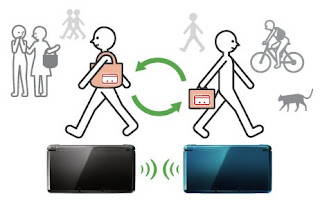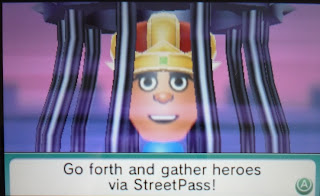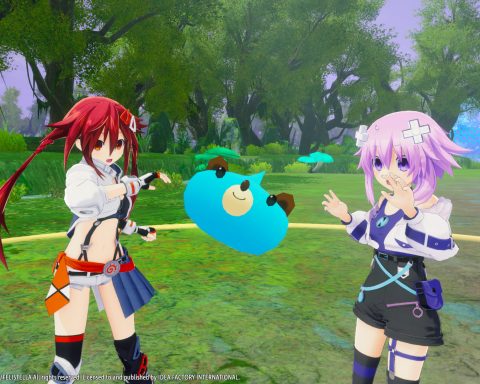Forget 3D screens and augmented reality, the Nintendo 3DS’ greatest feature is, in fact, StreetPass (read the Wikipedia article on StreetPass here). While the other features are good as initial selling points, and getting consoles into people’s hands, it is StreetPass that shows Nintendo’s genius at building communities around products, and is a genuine case of marketing outside of the box.
 |
| A stroke of genius, this. |
See, StreetPass is incentive to take the 3DS with you when you go out and about. The rewards it generates is varied, and potentially huge – the minigames built into the console are fun (especially the mini-RPG, StreetPass Quest), and 3rd party developers have access to it… already we’ve seen Capcom and Tecmo Koei make great use of it in Street Fighter and Samurai Warriors Chronicles, respectively.
When people take the console with them, they’re encouraged to play with it. It’s a simple marketing trick – the more you see a product in public, the more inclined you are to try it out for yourself. It’s a philosophy that accounted for much of the iPod’s initial popularity.
It’s also an encouragement to pick up the console and use it – however briefly – each and every day. The little green light that pops up when you’ve been StreetPassed is impossible to ignore… the potential rewards and chance to meet new Miis irresistible. Combined with the pedometer and real in-game rewards that come from just walking around using that feature, Nintendo has cleverly turned the 3DS into a lifestyle product… and with minimal effort. After all, the 3DS doesn’t make phone calls, doesn’t have a 3G connection, and yet people are still going to have this thing in their bags.
 |
| Well, if you say so! |
And you’re more likely to buy games for a console that you carry with you daily. Nintendo has, in essence, come up with an ingenious way of improving the ‘stickiness’ of their new console, and will make third party developer and publishers happy in turn when their games start selling well.
But more importantly, it helps position the 3DS as a social console, without Nintendo needing to renege on its online, family-friendly policy with online gaming. The lack of an ability to message friends, and the return of friend codes are both quite forgivable as the Mii Plaza starts to fill up – the console is still social, albeit in a way we haven’t seen before.
Encouraging other people to buy a 3DS, and encouraging 3DS owners to buy more 3DS games, StreetPass is a marketing trick, make no bones about it. But it’s a genuine and subtle approach to marketing that users will participate in very willingly (and very unknowingly). It is StreetPass that will be a big part of Nintendo’s long term 3DS success.
(and this author is amazed that in Sydney, of all places – hardly a gaming capital in the world – he managed to get StreetPassed twice in just the first day after the 3DS went on sale. Truly impressive uptake of the new console in Australia).






